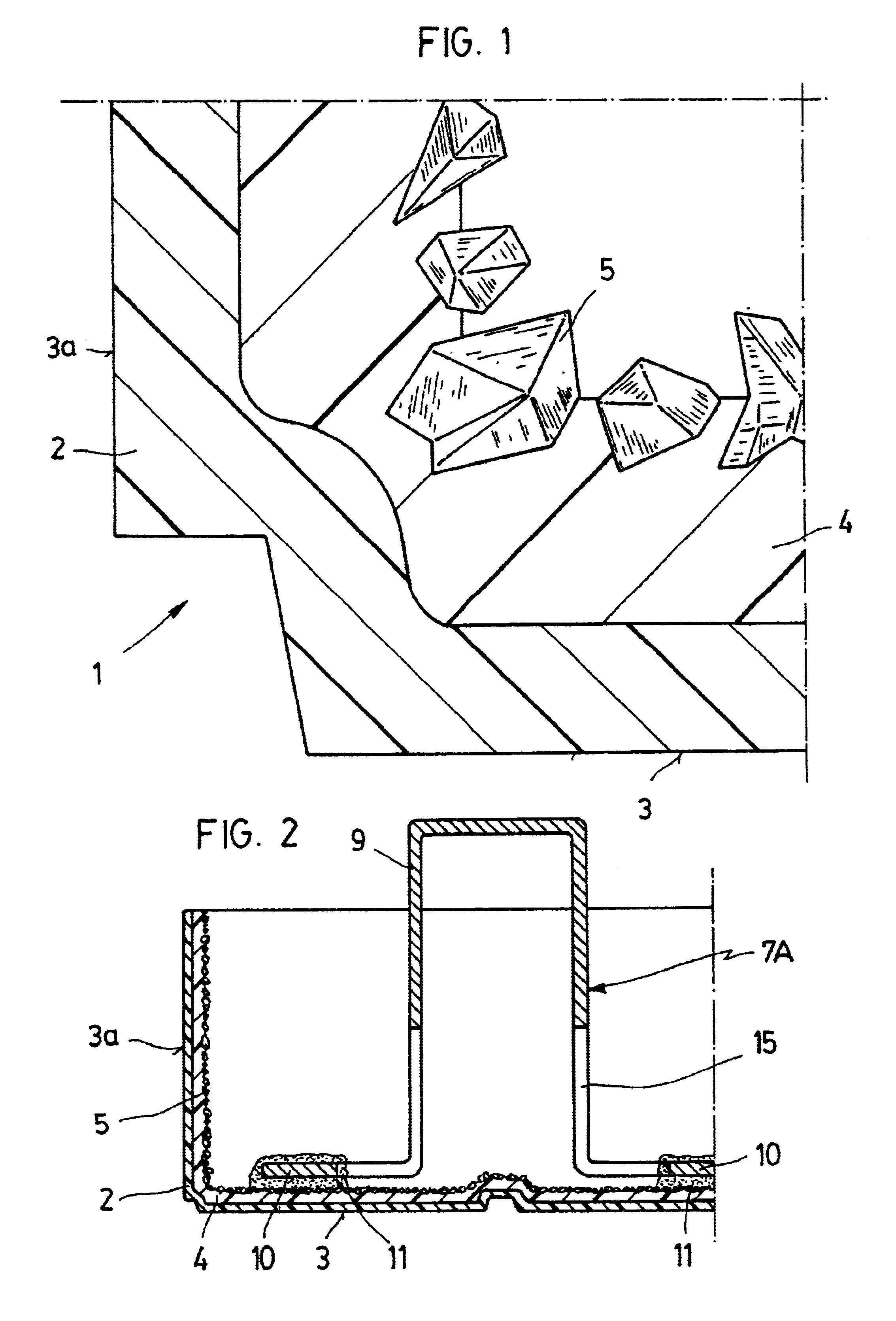Building panel and plant for the manufacture thereof
a technology for building panels and plants, applied in the direction of building components, bulkheads/piles, artificial islands, etc., can solve the problems of difficult to form intimate bonds, unreliable attachment, and delicate operation, and achieve simple and fast manufacturing, accurate positioning, and easy production
- Summary
- Abstract
- Description
- Claims
- Application Information
AI Technical Summary
Benefits of technology
Problems solved by technology
Method used
Image
Examples
Embodiment Construction
FIG. 1 shows a building panel 1 having, according to the invention, a structure constituted by a patterned layer 2 which, molded in synthetic resin, forms the patterned surface of the visible face 3 of the panel and constitutes a sort of shell for the panel 1 which comprises the edges 3a.
The said external layer 2 comprises, over the entire inner surface thereof, an inner layer 4, also of synthetic resin, having the entire free surface thereof covered with a solid bulk material 5. The components of this material are firmly embedded in part in said inner layer 4 and provide a substantial free surface area for anchoring the material of the resistant body 6 applied thereover, which material fills the entire volume of the said panel shell 1, at the same time as it includes therein reinforcement means 7, in general, which are provided with points directly accessible from the outside of the concealed face 8 of the panel 1, as may be seen in FIGS. 2, 3, 5, 6 and 9.
The solid bulk material 5...
PUM
 Login to View More
Login to View More Abstract
Description
Claims
Application Information
 Login to View More
Login to View More - R&D
- Intellectual Property
- Life Sciences
- Materials
- Tech Scout
- Unparalleled Data Quality
- Higher Quality Content
- 60% Fewer Hallucinations
Browse by: Latest US Patents, China's latest patents, Technical Efficacy Thesaurus, Application Domain, Technology Topic, Popular Technical Reports.
© 2025 PatSnap. All rights reserved.Legal|Privacy policy|Modern Slavery Act Transparency Statement|Sitemap|About US| Contact US: help@patsnap.com



